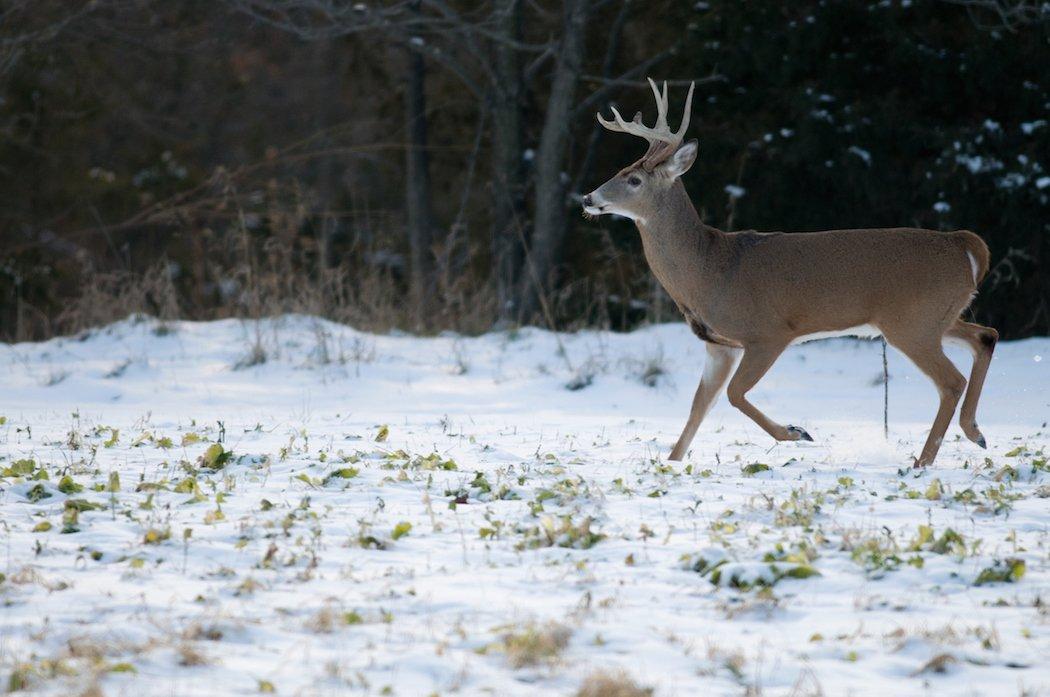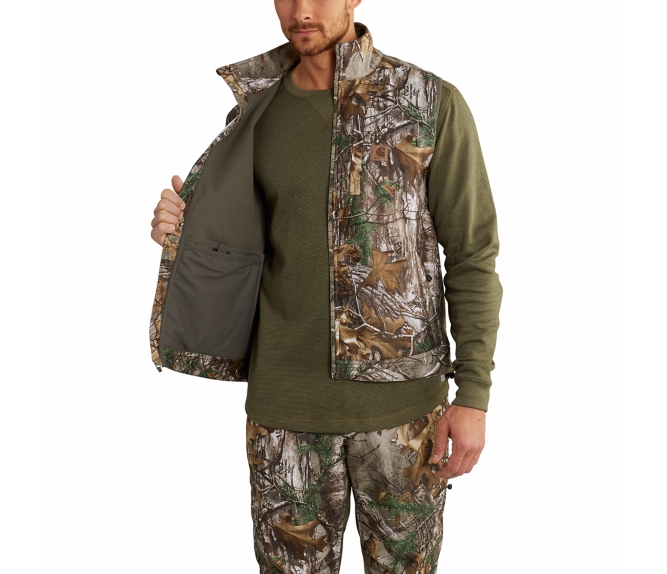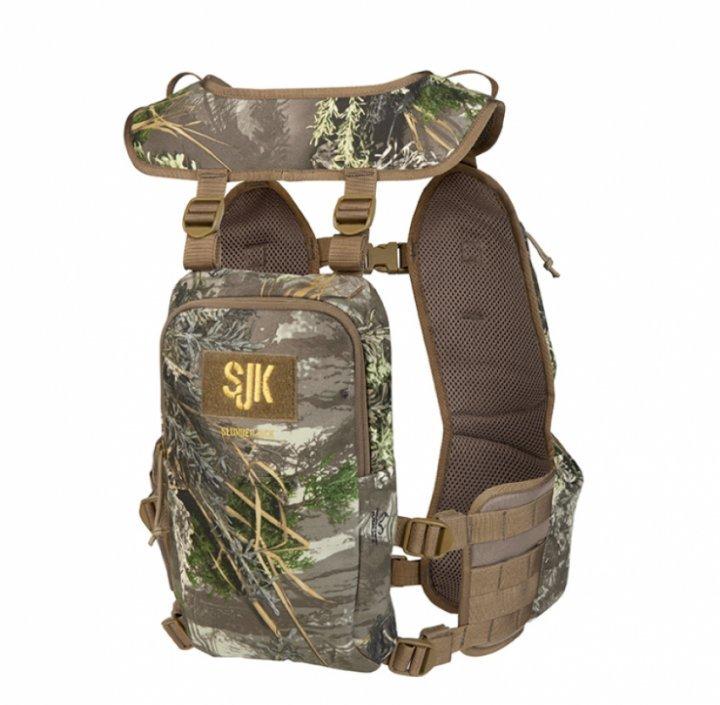A Week-By-Week Guide on Ways to Target Late-Season Deer
December. Christmas. Decorative Christmas trees. Cheesy Christmas songs. And late-season deer hunting. That pretty much sums up the final month of the year.
It's hard to believe the rut is over. But for the northern half of the country, it's largely complete. That said, there are a few nuggets of rut activity to be had in the next four weeks. Here is your plan for hunting the northern half of the country throughout the next 30 days.
December 1-9
This is likely the toughest week of the season to hunt. You're coming off the tail end of the rut. Deer have been pressured all season long. Bucks are rutted down and have slunk off to the few remaining pockets of unpressured ground that haven't been fouled by hunters during the season. And you're likely seeing little from the stand and on your cameras. In essence, as for your game plan, it's time to regroup, reanalyze and recharge.
Now is the time to find that deer you've been after all season. Deer have predominately left their rut ranges and are shifting to their winter ranges. For many bucks, this will be the same area(s) they used during the summer and early season. For other bucks that received a lot of pressure during the early season and pre-rut, it might be a different location. Nonetheless, whether bucks you're familiar with or new bucks that have moved in are inhabiting the ground you hunt, seek out the best, thickest bedding cover you can find. Locate those late-season honey holes that haven't been hunted very hard this season. Those mature bucks will get the pick of the litter when it comes to quality bedding locations. Find them. Focus on them. Set up between them and the best late-season food source you can find.
To find these spots, look at an aerial map. If you aren't seeing the deer you think you should, cross off areas that have been hunted hard thus far. Look at what remains. Then connect the dots between thick bedding cover (that also offers thermal/solar advantages) and the best food sources. That's where you should hunt the first part of December — bed-to-feed patterns.
Don't Miss: How to Hunt the Phases of the Rut
December 10-16
Unless you've landed yourself in a stockyard full of deer, the hunting is still likely pretty tough this week of the season. That said, it's getting better. Deer are starting to relax a little more as the hard pre-rut and rut-hunting pressure they felt a few weeks continues to gradually fade. Furthermore, hopefully the temperature is cooperating and the cold snaps we pray for all season long are hitting hard and bitter, getting those stubborn whitetails up on their feet in search of food.
I prefer to build on what scouting and hunting information I gathered during the early part of December. The rut basically trashed what scouting efforts you conducted during the pre-season and early season. However, the good part about the late season is much of what you learned then becomes relevant again. As previously mentioned, some bucks will return to their early season lairs. Other deer may move in, too, especially if there are adequate food sources available.
Another factor beginning to come into play is the second rut. Does that were missed during their first estrus cycle (generally between November 5 and 20) will come into estrus 28 days later. That will likely land a few receptive does right in the heart of this week. So, while you might be focusing on bed-to-feed patterns once again, don't forget to incorporate some rut tactics in your game plan as well.
Don't Miss: 5 Best Stand Locations for the Late Rut
December 17-23
We're still experiencing (however minuscule in some places) a second wave of estrus does. The good thing? Most of these are younger does and can even be doe fawns — as many as five to 50 percent of them will breed their first year in the North. Contrary to popular belief, it's not age, but weight, that dictates whether or not young does breed their first fall/winter. Percentages are higher in areas with better food sources, better soil and with more accommodating genetics.
Most of the older does have been bred by this point — even those that were missed in November and entered into a second cycle. Now, it's mostly young does and doe fawns entering estrus. This is good for deer hunters because they aren't as smart as older does. Instead of dragging trailing bucks into heavy cover like more mature does, younger ones will mosey on out into food sources with bucks in tow. This late-season behavior gets a lot of big deer killed where they wouldn't have been killable otherwise.
So how do you take advantage of this behavior? Hit up those staging areas. Back off the buck bedding areas you've been hugging tight to the last couple of weeks and transition to those staging areas close to food sources. Or, if you think the conditions are right, maybe even set up in a location where you can watch those open food sources. You never know what might come walking out behind a receptive doe.
Don't Miss: Kill a Late-Season Stud in 5 Days
December 24-31
We're getting to that point where hopes of even a late-rut doe are withering away or already altogether gone. It's possible one might pass through. But best focus solely on bed-to-feed patterns now. And unless you are very confident in your entry routes, only hunt afternoons. Hunting mornings can have a negative effect during the late season.
Try to determine where bucks are bedding — even the very bed they lay in. Having this information will make killing that deer much easier. Having his information allows you to get just close enough (but not too close) to put yourself in good position to intercept the deer as it rises and head toward the food source late in the afternoon. Personally, if bowhunting, I like to get within 100 to 125 yards of the bucks bed. Obviously that number varies depending on terrain, specific conditions and much more. But that's a good ballpark, generic number to shoot for, because older deer rarely move far from their beds until after legal shooting light has ended.
On the flip side, if your hunting and scouting efforts reveal deer moving more during daylight than anticipated, primary food sources, secondary food sources, edge cover and staging areas can work well this time of year, too.
All in all, December is a tough, but great, time to be in the deer woods. If you still have a tag in your pocket, best get out there. The freezer won't fill itself. Make the effort few hunters are willing to make — hunt late-season deer. You might find out you were missing something pretty great all along. After all, if the weather cooperates, end-of-year hunting can be pretty darn good.
Don't Miss: Realtree's Rut Report
Are you a deer hunter wanting to learn how to accomplish your goals? Check out our stories, videos and hard-hitting how-to's on deer hunting.









